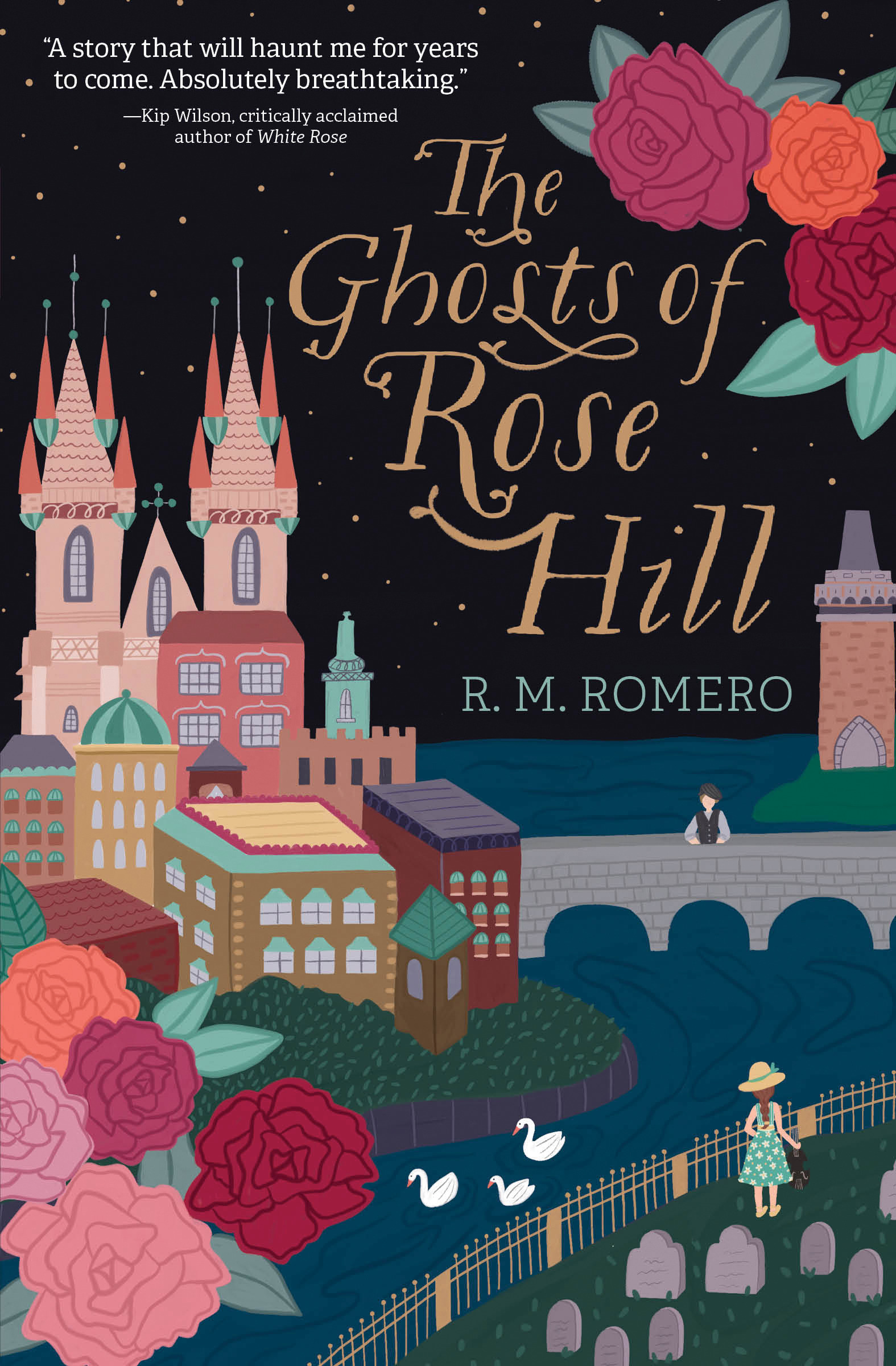Fairy tales and horror may seem like completely dissonant genres, but they actually have many things in common. One of them is their reputation for treating their female characters poorly. They’re objectified damsels in distress who must be rescued by a police man or a huntsman, depending on the era the story takes place in. Right?
Sometimes.
Sometimes not.
As a teenager in the early 2000s, most of my Friday nights were spent on my best friend’s couch watching horror movies while we wrote and drew together. As a result, films like Buffy the Vampire Slayer, Scream, Ginger Snaps, The Silence of the Lambs, Jeepers Creepers, and The Ring became formative for me as a storyteller. Especially how they centered the so-called “final girl.”
The author at 16, the same age as the heroine of The Ghosts of Rose Hill.
A final girl, according to the Wikipedia article on the subject, “is a trope in horror films (particularly slasher films). It refers to the last girl(s) or woman alive to confront the killer, ostensibly the one left to tell the story.” In other words, the final girl is the character who witnesses the monster’s crimes and escapes becoming a victim of them. She’s often the one who ultimately stops the monster and in doing so, takes revenge for her friends who weren’t lucky enough to survive. Ironically though, her victory is rarely final . The monster usually survives the same way the final girl does, and they must confront each other again and again. Evil is never fully destroyed…but neither is good, which makes the final girl a hopeful if not outright triumphant figure.
The final girl is not a new concept, which brings us back to fairy tales. Bluebeard’s last wife is a final girl. Little Red Riding Hood is a final girl. Gretel is a final girl. Each of these characters is swallowed by the darkness, fights her way out, and emerges from her grim experience changed.
Gretel defeats the witch, by Frank Adams
As much as my younger self loved final girls like Gerda from The Snow Queen , Buffy Summers, and Clarice Starling however, these characters didn’t exactly reflect my lived experience. They were all white women and they were all at least coded as being Christian, if not outright stated to be so.
So in 2019, I decided to write a final girl who was like me: Ilana Lopez, the biracial heroine of The Ghosts of Rose Hill .
Cuban and Jewish, Ilana’s monsters are manyfold. They come in the form of intergenerational trauma passed down to her by her parents, both survivors of brutal authoritarian regimes, and the echoes of antisemitic violence and erasure of Jewish life that haunts the otherwise enchanted city of Prague.
But not all of the monsters Ilana finds herself in the shadow of over the course of the book are from the past. The true villain of The Ghosts of Rose Hill lives in the present and walks the streets, just like Ilana. He is the kind of narcissistic antisemite who exists in too many places in the real world. He just happens to have very sharp teeth in Ilana’s magic-infused Prague.
Like my heroine, my villain also has his origins in the horror movies and fairy tales of my younger years. To create him, I drew from Czech and Cuban folklore, and the most frightening fictional monsters I could think of—Hannibal Lecter, Pennywise the clown, Angelus, and the Other Mother among them.
There are echoes of non-fictional monsters in my villain too. When I was drafting The Ghosts of Rose Hill, I was watching Netflix’s Extremely Wicked, Shockingly Evil and Vile , which stars Zac Efron as the serial killer Ted Bundy. I drew from Efron’s portrayal of Bundy’s superficially charming persona…and the violence, arrogance, and soul-deep rot lying just below the surface.
Maybe now, you can see why The Ghosts of Rose Hill was originally titled The Final Girl. Because at its heart, it’s about a girl who fights a monster so that she can protect herself…and someone she loves.
I’ll always embrace horror and fairy tales. In my eyes, best stories in those genres are empowering; they show us that even the people society typically views as weak, helpless, and otherwise marginalized can survive, outsmart, and even defeat our monsters—whoever or whatever they may be. These are stories that remind us we can step back into the daylight after the long night, and we can be free of what haunts and hunts us. “The final girl survives because she can be just as ruthless as the monster who wants to destroy her.”
I hope Ilana and The Ghosts of Rose Hill helps readers recognize their own strength. We all have power within us; we just need to find it.
Meet the author
R. M. Romero is a Jewish Latina and author of fairy tales for children and adults. She lives in Miami Beach with her cat Henry VIII and spends her summers helping to maintain Jewish cemeteries in Poland.
Author website:
Instagram:
Facebook:
About The Ghosts of Rose Hill
With spellbinding verse prose, R.M. Romero channels the spirit of myth into a brilliantly original tale, inspired by her experiences restoring Jewish cemeteries in Eastern Europe.
Magic will burn you up.
Sent to stay with her aunt in Prague and witness the humble life of an artist, Ilana Lopez—a biracial Jewish girl—finds herself torn between her dream of becoming a violinist and her immigrant parents’ desire for her to pursue a more stable career.
When she discovers a forgotten Jewish cemetery behind her aunt’s cottage, she meets the ghost of a kindhearted boy named Benjamin, who died over a century ago. As Ilana restores Benjamin’s grave, he introduces her to the enchanted side of Prague, where ghosts walk the streets and their kisses have warmth.
But Benjamin isn’t the only one interested in Ilana. Rudolph Wassermann, a man with no shadow, has become fascinated with her and the music she plays. He offers to share his magic, so Ilana can be with Benjamin and pursue her passion for violin. But after Ilana discovers the truth about Wassermann and how Benjamin became bound to the city, she resolves to save the boy she loves, even if it means losing him—forever.
ISBN-13: 9781682633380
Publisher: Holiday House
Publication date: 05/10/2022
Age Range: 14 – 17 Years

